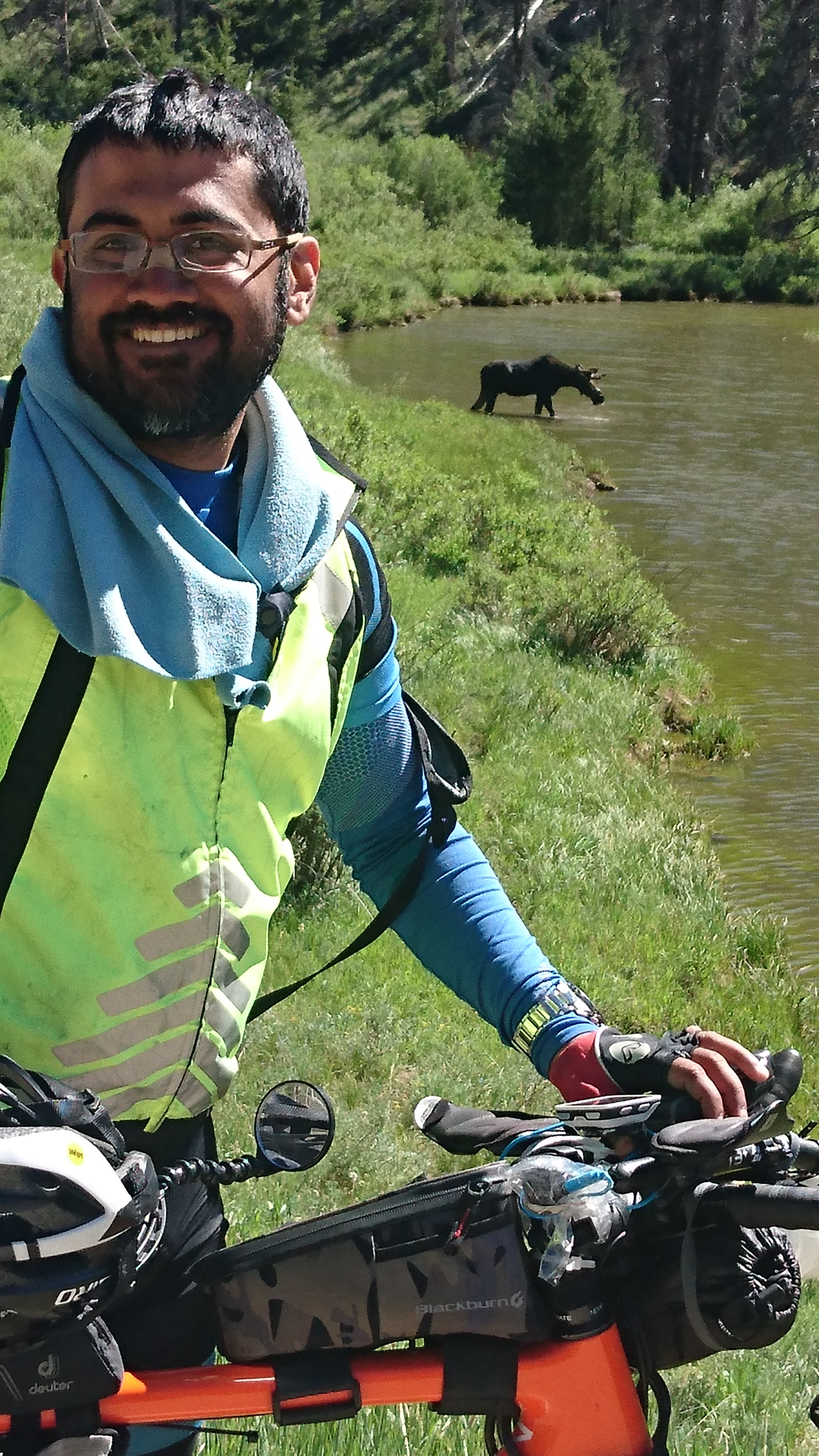The 'Chengi Century' explained
I rode TABR in 2017; in 2018, I joined the ranks of the keen dot-watchers, the likes of Ron Nelson and Tony “Grmaa-pa” Shawley in absorbing the TABR action. My fellow TABR veterans from 2017 such as David Gates and Peter Andersen were riding again, and I was also keenly tracking some other riders I’d found interesting, such as Nishanth Iyengar and Louis-Eric Simard. I’d see how many hours each logged on their saddle per day, the stop options that were available to them on their route, and most importantly, the amount of climbing they had to do on the path ahead. For the last, i.e. calculating the climbing work ahead of the riders, I wrote a python script called elevprofiler.py which is available on my git repo here. Using this tool, and the official ridewithgps track for TABR 2018, I was able to get the amount of climbing in meters, when I keyed in the start and end points on the track.
Having written this tool, I was now interested to know which 100 mile segment of the course was the one with the maximum amount of climbing. Let me explain how I calculated this; the tcx course file from ridewithgps, has elevation information associated with each point. The 2018 tcx file for instance has 41061 points across the full distance of 6734 kilometers/4208 miles. If the second point of a pair of successive points was higher than the first, the difference was positive, i.e. climb, and if the difference was negative, it was a descent. I summed up all of the instances in a segment where there was a positive difference, to come up with the climbing done. This is not to be confused with overall difference in elevation. For example, if a rider starts at 3500 m and climbs to 4000 m, descends to 2000 m and climbs back up to 3500 m, the total climbing done is 2000 m, though the overall difference in elevation is 0 meters. I then wrote a script which sequentially ran the elevprofiler.py script, to extract the elevation for points which were a 100 miles apart, with a granularity of a mile. That is, I computed the climbing done between mile 0 and mile 100, and then between mile 100 and 101, and so on, all the way to the end, and thereby deduced the 100 mile segment of the TABR course with the greatest amount of climbing between them. The result of the computation was that the section between Honaker, VA, and Wytheville, VA was the one which had the greatest amount of climbing, with riders having to climb through 4386 m and descend through 3603 m.

When I posted my findings on the TABR facebook group, it got people interested in it and started quite a few conversations around it, but it was Ron Nelson who dubbed the segment the ‘Chengi Century’, and the name kind of stuck. Recently, another avid dot-watcher, John Sprock, asked me for more details about the Chengi Century, and that’s how this post came about, so thank you, John!
